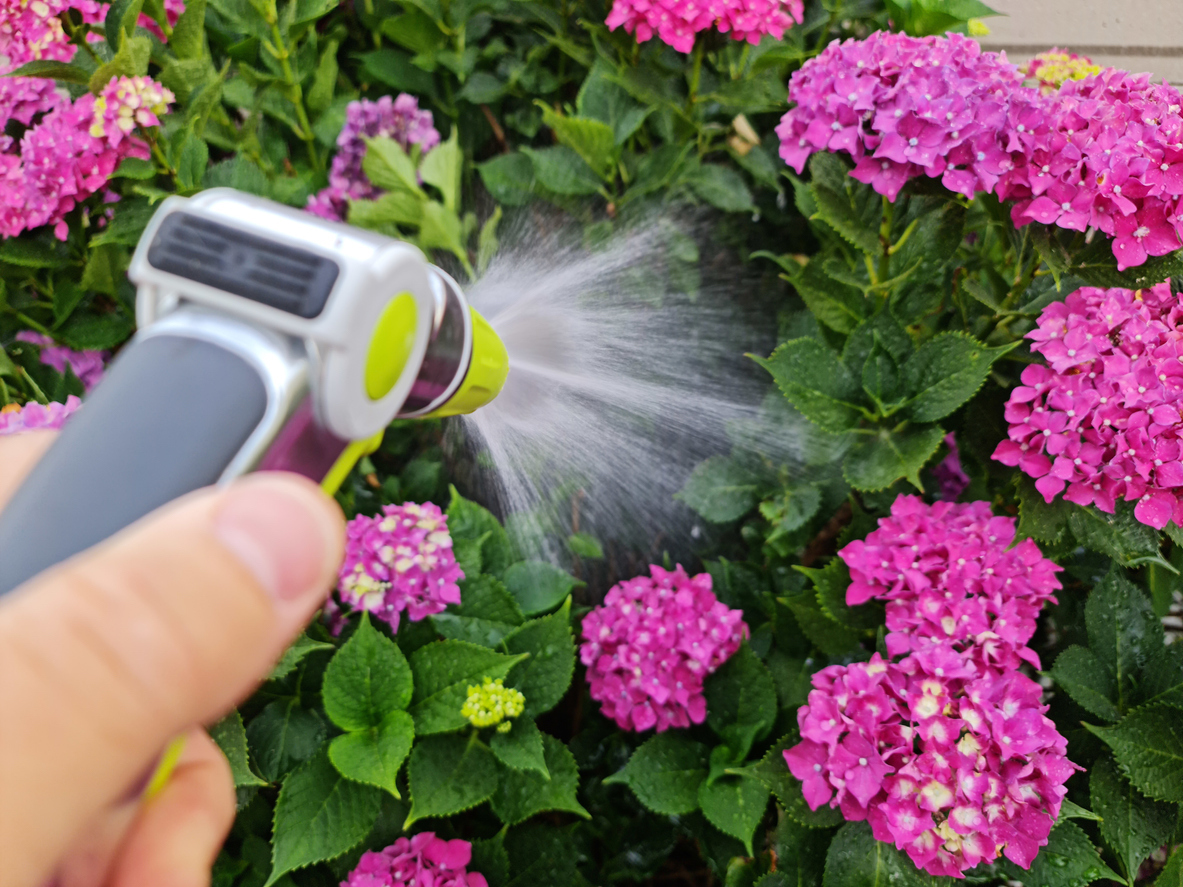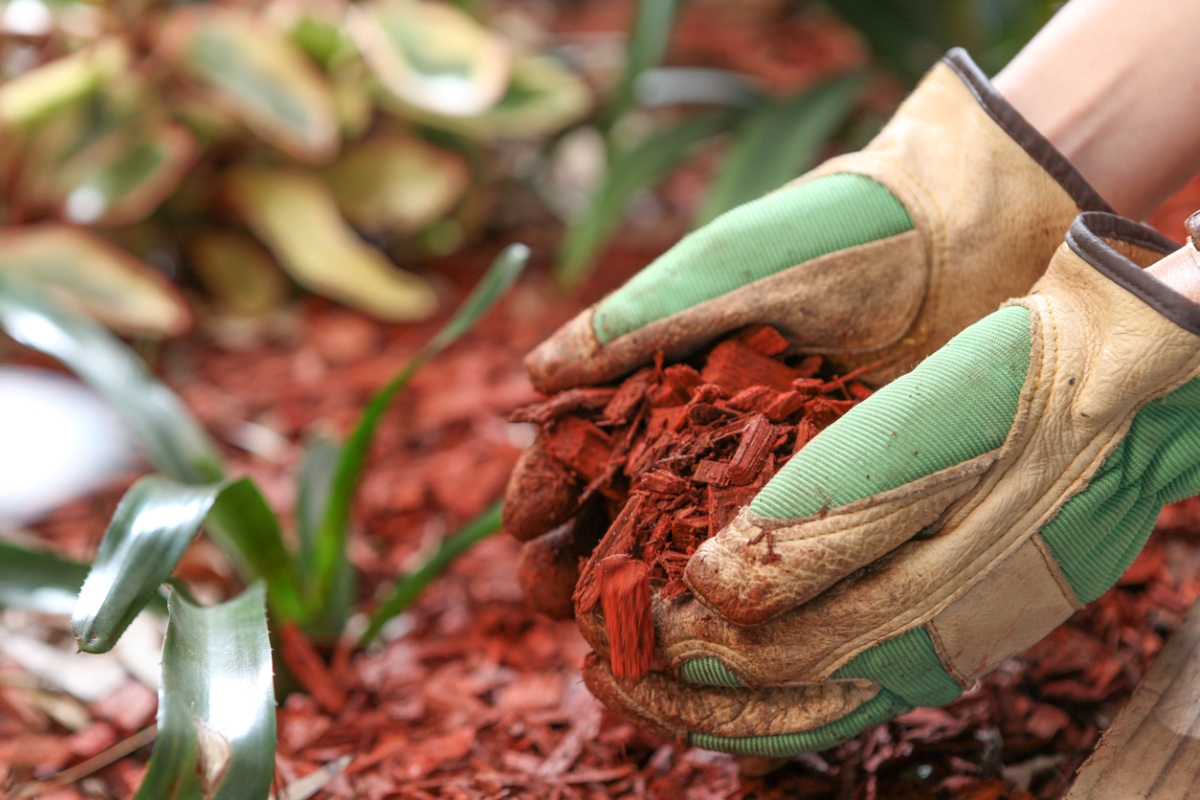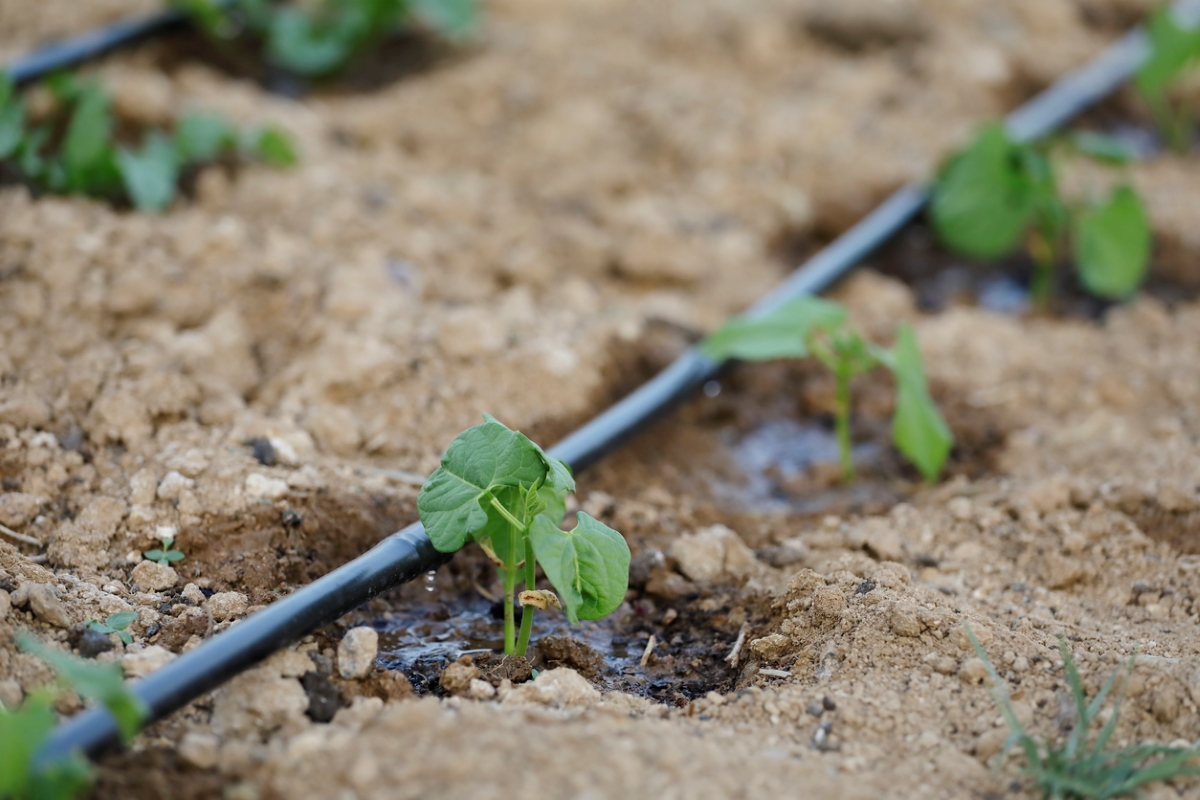

We may earn revenue from the products available on this page and participate in affiliate programs. Learn More ›
Q: It seems like my neighbors water at all hours of the day, and I’ve heard conflicting information on what time of day is best for watering the garden. What’s the best time to water plants?
A: Knowing the best time to water plants is key to helping any garden grow. Whether you water with a sprinkler system, drip irrigation, or by hand, watering plants at the ideal time of day will save time, money, and strain on the plants. Watering in the early morning is always the most energy efficient, but it’s equally important to know how much water flowers and other plants require and how frequently you should be watering.
Believe it or not, according to the U.S. Environmental Protection Agency (EPA), the average U.S. household uses more water per day on outdoor landscaping than it does for the combination of showering and washing clothes. The good news is that you can keep plants healthiest not necessarily by giving them more water, but by providing the right amount of irrigation at the right time.
Most guidelines recommend that during the normal growing season, landscaping needs an average of 1 inch of water per week. Of course, depending on the climate you live in and factors such as rainfall and heat, how frequently you water can vary. The EPA offers an easy and smart tip for determining if your existing garden watering schedule is too much or not enough: Place a few empty cans around the lawn or landscaping and time how long it takes for those cans to fill with half an inch of water when running spray irrigation. Then, try watering for that amount of time twice weekly to reach the recommended inch, monitoring how your garden grows.
RELATED: The Best Watering Wands, Tested and Reviewed
Morning is the best time to water outdoor plants.
Morning is the best time to water a lawn to lessen water loss to evaporation and prep the turf for a hot summer day. Watering a plant around sunrise also is ideal. By watering outdoor plants before the sun gets too strong and while temperatures are cooler helps the plants absorb more of the water before sun and heat evaporate the precious resource. It also sets plants up for success on hot days, allowing them to get the water they need to endure higher temperatures later in the day.
Watering in the middle of the day or late afternoon can be the worst time of day to water. Plants experience stress from a long hot day, but water that reaches leaves and stems can be magnified in the hot sun, causing leaf burn. In addition, it’s not as efficient. Water is absorbed before it has a chance to drain down into the soil near the plant’s roots.
Many people like to water their plants at night. Watering plants at night can be problematic because there is no natural evaporation, leaving moisture to stay on leaves and increasing the chances of things like powdery mildew on certain plants. Roses and squash plants are particularly susceptible to powdery mildew. However, if there is a heat advisory, watering plants with shallow root systems the night before can reduce stress on the plants.

Water wilting plants immediately, no matter the time of day.
Although early morning is the best time of day to water plants to prevent wilting, it’s inevitable that on hot days plants—especially new outdoor flowers or annuals—can wilt. If a plant is wilting, give it some water immediately to reduce stress. Most plants are resilient enough to bounce back from wilting. However, ignore the problem for too long and you’ll have dry plants that might not survive. Be careful when watering wilted plants to pour water at the base of the plant to get moisture to the roots as quickly as possible.
RELATED: 7 Signs You’re Overwatering Your Plants—and How to Fix It
Typically, younger plants and annuals need to be watered more frequently than mature plants and perennials.
Younger plants, annual outdoor flowers, and summer plants like seasonal veggies don’t have the deep, established root systems of mature plants and perennials. With annuals and young plants, roots reach only into the top few inches of soil at the most. This means that the roots are growing in the part of the soil that dries out the fastest, especially on hot days.
Keeping the soil evenly moist or adding a layer of mulch on top of the soil will prevent young plants and annuals from drying out. This might require more frequent watering. Soil that dries out too much can become compacted, leading to poor drainage and difficulty retaining moisture. Additionally, seeds and new starts will need frequent watering, generally every day until established.

Water outdoor container plants as needed.
Container plants will frequently need a different watering schedule than the rest of an outdoor garden. This is because containers can dry out faster than the ground. It’s important to use the right potting mix for outdoor containers that helps container-bound plants retain moisture and nutrients while allowing for adequate drainage. Even on rainy days, however, containers and window boxes sitting on a sheltered porch or out of the direct line of rainfall will require watering.
RELATED: Growing Seasons are Getting Longer—What That Means for Your Home Landscape
9 Tips for Mastering the Best Time to Water Plants
With a little planning, watering plants can be pleasurable and easy, giving you more time to spend relaxing in the company of your outdoor plants.

- To ensure new plants get the water they need, a finger in the soil should do the trick: if it’s not moist 2 inches below the surface, give the plants some water.
- Add a layer (about 3 inches) of mulch to the garden to help maintain moisture and prevent soil from drying out at the surface.
- Plant drought-tolerant plants and water-smart landscaping. Native plants often add the benefit of being naturally drought-tolerant and attracting pollinators.
- Avoid watering in the heat of the day, especially if your area is in a drought.
- Invest in drip irrigation for landscaping and vegetable gardens. These can be arranged on a timer and set to specific zones for different plant watering needs.
- Water deeply, as with drip irrigation, which distributes water slowly so that it has enough time to trickle down through the soil to the roots.
- Harvest rainwater in a rain barrel or cistern for use on non-rainy days.
- Perform a regular maintenance check on your sprinkler and irrigation systems to ensure there are no leaks and the system is working efficiently.
- Avoid overwatering; flooding an area can destroy tender new plants, remove vital nutrients, and create mildew.
